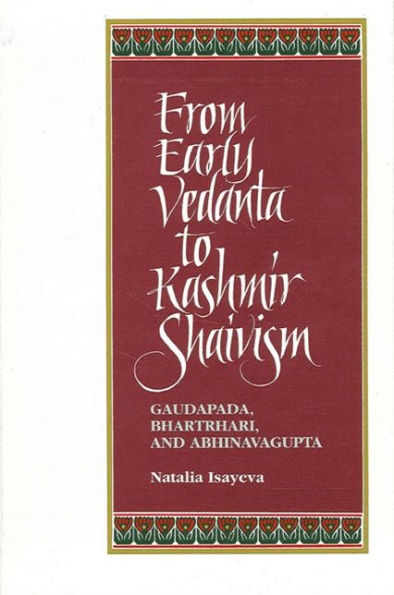This book deals with one of the most interesting periods in the development of Indian religious and philosophical traditions. Starting with the teaching of the proto-vedantist philosopher Gaudapada, and then analyzing the ideas of his famous contemporary, the grammarian Bhartrhari, the author suggests an entirely new approach to the whole history of vedanta.
Gaudapada and Bhartrhari are presented as founders of an independent trend within Indian orthodox philosophy, a trend that culminates later in the theistic tenets of Kashmir Shaivism. Isayeva shows that, in contrast to SAankara, early vedantist philosophers regarded the higher Brahman as a kind of continuous reverberation of a peculiar phonic energy that was ever producing the same constantly renewable structures and patterns of the universe. This idea found its continuation in the metaphysical and aesthetical concepts of Abhinavagupta, where the ultimate ontological reality is manifested through the rhythmical outbursts of God's creative power.
This book deals with one of the most interesting periods in the development of Indian religious and philosophical traditions. Starting with the teaching of the proto-vedantist philosopher Gaudapada, and then analyzing the ideas of his famous contemporary, the grammarian Bhartrhari, the author suggests an entirely new approach to the whole history of vedanta.
Gaudapada and Bhartrhari are presented as founders of an independent trend within Indian orthodox philosophy, a trend that culminates later in the theistic tenets of Kashmir Shaivism. Isayeva shows that, in contrast to SAankara, early vedantist philosophers regarded the higher Brahman as a kind of continuous reverberation of a peculiar phonic energy that was ever producing the same constantly renewable structures and patterns of the universe. This idea found its continuation in the metaphysical and aesthetical concepts of Abhinavagupta, where the ultimate ontological reality is manifested through the rhythmical outbursts of God's creative power.

From Early Vedanta to Kashmir Shaivism: Gaudapada, Bhartrhari, and Abhinavagupta
197
From Early Vedanta to Kashmir Shaivism: Gaudapada, Bhartrhari, and Abhinavagupta
197Paperback(New Edition)

Product Details
| ISBN-13: | 9780791424506 |
|---|---|
| Publisher: | State University of New York Press |
| Publication date: | 07/01/1995 |
| Series: | SUNY series in Religious Studies |
| Edition description: | New Edition |
| Pages: | 197 |
| Product dimensions: | 6.00(w) x 9.00(h) x 1.00(d) |
| Age Range: | 18 Years |
